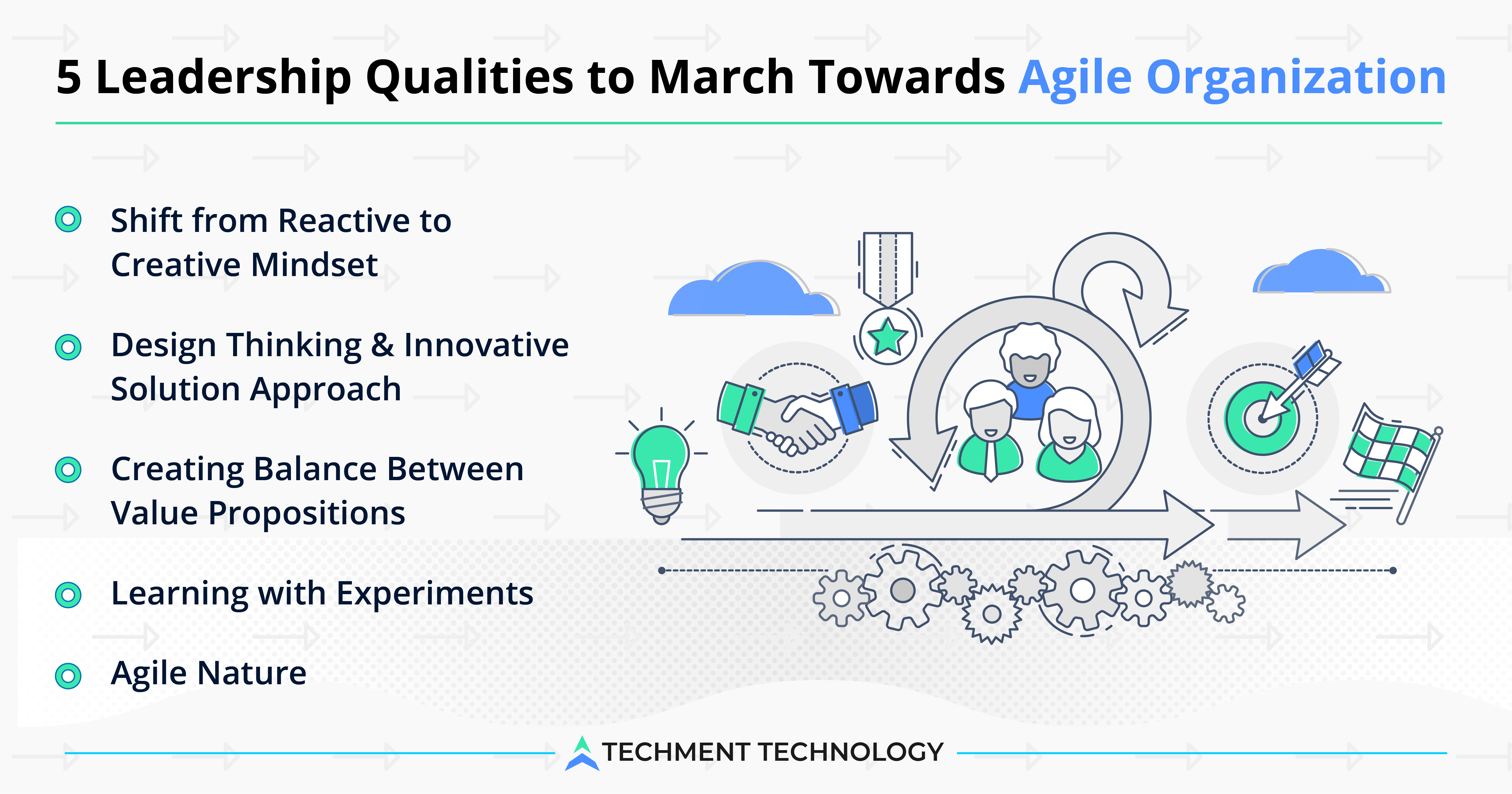Agile Leaders Must Navigate Through Changes For Agility
Many organizations thriving in today’s environment are heading towards fundamental transformation to become more agile. Agile isn’t just a framework but a set of principles to develop and undergo development and production which is more dynamic. Agile organizations are those living systems that thrive in an unpredictable environment, embrace change and uncertainty, outrunning from siloed and structural hierarchy to adopt change and uncertainty. There exist profound ways of becoming agile as it is an umbrella of values and principles and under it, different frameworks are present that help an organization achieve agility.
Most of the organizations which are successful and stable have difficulty in undergoing agile transformation. And companies that are unstable are more frequently going through a transformation, according to a McKinsey survey done on 2,500 people. Unstable companies are fast migrating towards agile transformation. For leaders who are in the managerial hierarchy have an uncertain feeling about the transformation and try finding out from past experiences, try to control, try adding things, add rules, processes and add structures.
5 Leadership Qualities to March Towards Agile Organization
The agile environment requires completely different types of leadership as it is responsible for shaping the culture and mindset. Leaders themselves first need the set of capabilities to be built like transforming their personal mindset and behaviors, transforming the mindset of teams, trying to build the design and culture of the whole enterprise.
Leaders wishing to change or transform the company must start by transforming on a personal level. In an organization, the conscious scrutiny of a leader’s mind is indispensable to all leadership effectiveness.
The leadership qualities to promote the agile culture in organization are:

1. Shift from Reactive to Creative Mindset: A reactive mind approaches the solution when it discovers a necessity or demand from the consumer and is an outside way of reacting to circumstances. When the mind becomes creative and self-authoring it approaches to create a new realistic implementation by tapping into a more authentic self and purpose.
The creative mindset can be seen shifting in the following attitude:
From Certainty to Discovery: A certain mind definitely plans something not to lose, being in control, and following the past experience. This is a way traditional organizations’ leaders need to work the way it’s planned. The mind which is ready to discover will find its way even through uncertainty, embrace the risk and foster creative vision.
From Authority to Partnership: Designed for collaboration, the agile organization employs a team that has a creative mindset, skills, strength through freedom, and trust which is based on mutual acceptance unlike in authority where everyone is bound by hierarchy.
From Scarcity to Abundance: At present, agile leadership requires unprecedented challenges and opportunities to be recognized by leaders where they have the approach of looking at abundance opportunities and resources rather than acting on the situation with limited resources.
2. Design Thinking & Innovative Solution Approach: Design thinking is a useful approach in tracking the problems that are ill-defined or unknown. It is a dynamic model, helpful in innovative customer solutions and business models. The model is structured and linear which starts with mapping the customer journey in each stage and helps leaders to align the business goals with stakeholders.
For an organization to be agile, “leadership” is viewed as a value-creating unit or “business”. The key focus for an agile organization is its customer, so leaders at each level need a sound knowledge of how a new business model will work and how to deliver the net value to all stakeholders and everyone wins.
3. Creating Balance Between Value Propositions: For guiding the team to work for agile organizations, leaders must identify true value propositions and train the team to create a balance between them.
Purpose & Values: For an agile enterprise the purpose and values must be built on a shared vision.
Strategy: The strategies must be built on adaptive roadmaps.
Leadership & Culture: Leaders must entail a culture that consists of learning habits.
Structure & Accountability: The formal organizational structure which insists only on reporting of employees must undergo changes to dive deeper into management systems and individual accountability.
In agile, the structure isn’t always perfect; and that’s the good thing!!!
4. Learning with Experiments: There isn’t any fixed way of “doing agile” but exploring what works, and what doesn’t, for people and processes involved. Quickly finding a perfect way for organizations to be agile, isn’t an agile way, rather creating a learning environment and experiment is. Organizational agility demands a higher concentration of employee learning and organizational learning and both are correlated.
5. Agile Nature: Finally, you should roll out leadership capability building at an agile tempo. Leveraging agile strategy at fixed intervals is important to gain leadership insights and clear the blur visions. This cycle helps in bringing natural cohesion and leadership-building initiative and enables continuing flexibility. More than any other factor, the key to a successful agile transformation is to help your leaders, especially senior executives, develop the mindset and skills to design, build and lead an agile organization. This will allow your organization to succeed and thrive in the exciting and ever-changing scenario.
Understanding the agile approach requires knowledge of what doing agile and being agile mean and there exists a big difference between them. If a leader follows agile principles, policies, techniques, set of rules to reach agility and accomplish the task then it’s doing agile. Whereas, if a leader invests in behavior, attitude, values, performance, quality, and the team itself and adopts the abrupt changes then it’s being agile. Hence, to proliferate business activities, an open and agile mindset is obligatory.
Agile leaders Aspire to Shift Mindset and Stretch Vision
The most important thing agile leaders do is foster a culture that supports empiricism of agile and learning to constantly seek better results. The challenge for leaders is that they cannot dictate the culture; they can only create the conditions conducive to its emergence. One important aspect of leadership quality is to change the mindset of members in an organization. Moreover, the project mindset must be replaced with a product mindset where the former is just finishing and launching the product and the latter demands focus on eventual goals rather than short-term achievements.
Leaders who want to bring agility to their organization should develop a plan and start marching towards it in pursuit of their shared goals and values when old behaviors want to take over. Agile leaders must help the organization optimize flexibility and continuous improvement, ensuring that improving customer experience is a priority and that other parts of the organization support this mission.
 All Posts
All Posts


